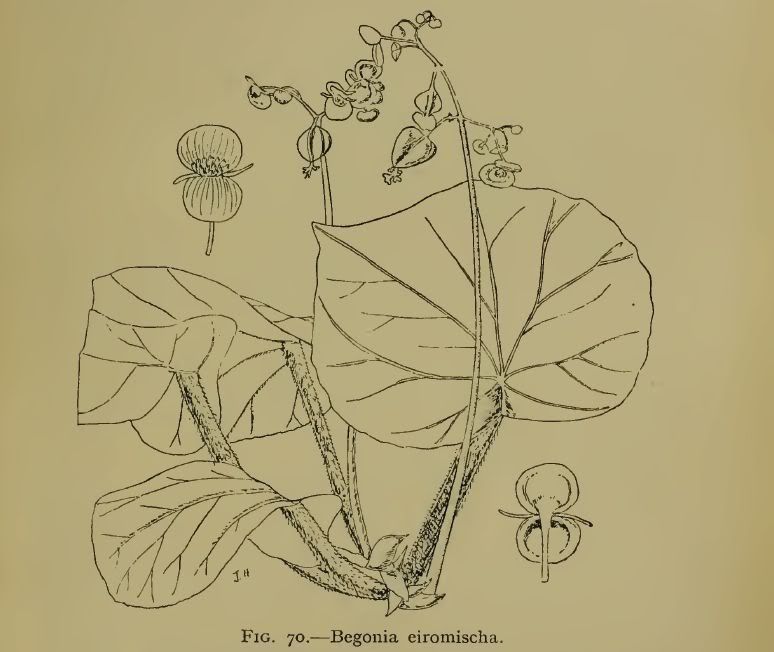|
|
Post by Melanie on Sept 12, 2007 14:10:50 GMT 1
The Woolly-stalked Begonia (Begonia eiromischa) is the only species to have been declared extinct this year. This Malaysian herb is only known from collections made in 1886 and 1898 on Penang Island. Extensive searches of nearby forests have failed to reveal any specimens in the last 100 years.
|
|
|
|
Post by Peter on Sept 16, 2007 17:51:11 GMT 1
Malaysia's Begonia Herb Declared Extinct 2007-09-14 11:19:01 Xinhua Malaysia's locally-found herb begonia has been declared extinct on a global conservation list this year, local media reported on Friday. The woolly-stalked begonia (Begonia eiromischa) is a herb found only on Pulau Betong in northern state of Penang, the New Straits Times said. According to the report released by the World Conservation Union (IUCN), the plant has not been sighted in the last 100 years, despite extensive searches in its known habitat. It is only known from collections that were made in 1886 and 1898 on Pulau Betong. The report noted that the area the plant was found in was cleared for farming in the 1980s. Around 70 percent of the world's assessed plants are on the 2007 Red List of Threatened Species. The addition of the begonia brings the total extinct species to 785. A further 65 species now exist only in captivity. The IUCN Red List is widely recognized as the most reliable evaluation of the world's species. It classifies them according to their extinction risk and brings into sharp focus the ongoing decline of the world's biodiversity and the impact that mankind is having upon life on earth. The list was released on Wednesday by the IUCN, which said there is a "mounting global extinction crisis" happening, as 187 species were added to the list this year alone. The IUCN, which comprises governments, conservation groups and scientists, assessed over 40,000 species this year. Of these, 16, 306 are under threat. Endangered species in this year's list include the Western lowland gorilla in central Africa and the great hammerhead shark. The Yangtze river dolphin, or Baiji, is endangered/possibly extinct, while the Bornean and Sumatran orang utan is critically endangered. Moved from endangered to critically endangered is the gharial, a crocodile found in India and Nepal. Source: CRIENGLISH.com english.cri.cn/2906/2007/09/14/1461@273763.htm
|
|
|
|
Post by anotherspecialist on Jul 6, 2008 9:10:16 GMT 1
|
|
|
|
Post by anotherspecialist on Jul 6, 2008 9:13:35 GMT 1
Closer to the brinkCONSERVATION efforts carried out so far appear to have done little to protect Malaysia’s wildlife. None of our threatened species are better off today. Instead, more have slipped nearer to the brink. The 2007 IUCN Red List of Threatened Species declares 686 plants and 225 animals in Malaysia as facing the risk of extinction. In the 2003 Red List, it had 683 plants and 145 animals in danger of dying out. With a total of 911 species under threat, Malaysia has the third largest number of imperilled wildlife globally, and is preceded only by Ecuador (2,178 species) and the United States (1,179). But because the review focuses on the global conservation status of species, it does not necessarily reflect their status in a particular country, experts caution. “A plant that is endangered in Indonesia but not so in Malaysia, would still be classified as threatened,” points out Forest Research Institute of Malaysia botanist Dr Lillian Chua. In the Red List, Malaysia ranks second globally for threatened plants, with 686 species (after Ecuador at 1,836 species). Most “critically endangered” plants are timber trees such as merbau, meranti, seraya and balau. Chua, who contributes data on plants for the IUCN assessment, disagrees with some of the listings. She says intensive botany work in recent years as part of the Malaysia Plant Red List project, has shown many timber tree species to be not “critically endangered”. The use of outdated data in the Red List appears to hold true in the case of the woolly-stalked begonia (Begonia eiromischa), the only species to be declared “extinct” in the 2007 Red List. Found only on Penang island, the plant is known only from collections dating back to 1886 and 1898. Local botanists have, over 20 years ago, acknowledged the extinction of this plant but this record was ignored by the IUCN, until now. Plant taxonomist Dr Ruth Kiew had, in the 1980s, gone to Kampung Pulau Betong, Penang, where the plant was first collected, but found the area had been turned into farms.“We searched every little stream (the plant grows besides rocky streams) but did not find the plant,” said Kiew, author of Begonias of Peninsular Malaysia. thestar.com.my/lifestyle/story.asp?file=/2007/9/18/lifefocus/18894656&sec=lifefocus
|
|
|
|
Post by Melanie on Nov 15, 2009 11:20:50 GMT 1
B. eiromischa Ridl. foiirn. Roy. As. Soc. S. Br. 75, p. 36
(Fig. 70, p. 859).
Rhizome short, stout. Leaves fleshy obliquely reniform peltate
acuminate deep green, glabrous, 3 to 3.5 in. long and wide ; nerves 7
;petioles 2 to 3 in. thick, densely red-hairy. Peduncle glabrous red,
about 5 in. long. Flowers on 2 branches, small rose pink 0.5 in.
across. Male, sepals 2, broad orbicular rounded. Petals very
narrow, linear. Females, style trifid ; branches bifid. Fruit 0.6 in.
long, lateral wings very short, posterior rather thin, broad oblong
rounded, 0.3 in. long and wide. Hah. Penang, Pulau Betong (Curtis
1028).
Source: Henry Ridley (author), John Hutchinson (illustrator): The Flora of the Malay Peninsula Vol. 1. Polypetale. 1922 pp. 859-860
|
|
|
|
Post by Melanie on Nov 15, 2009 11:41:12 GMT 1
 Source: Henry Ridley (author), John Hutchinson (illustrator): The Flora of the Malay Peninsula Vol. 1. Polypetale. 1922 pp. 859-860 |
|
|
|
Post by koeiyabe on Jan 9, 2019 3:33:19 GMT 1
|
|